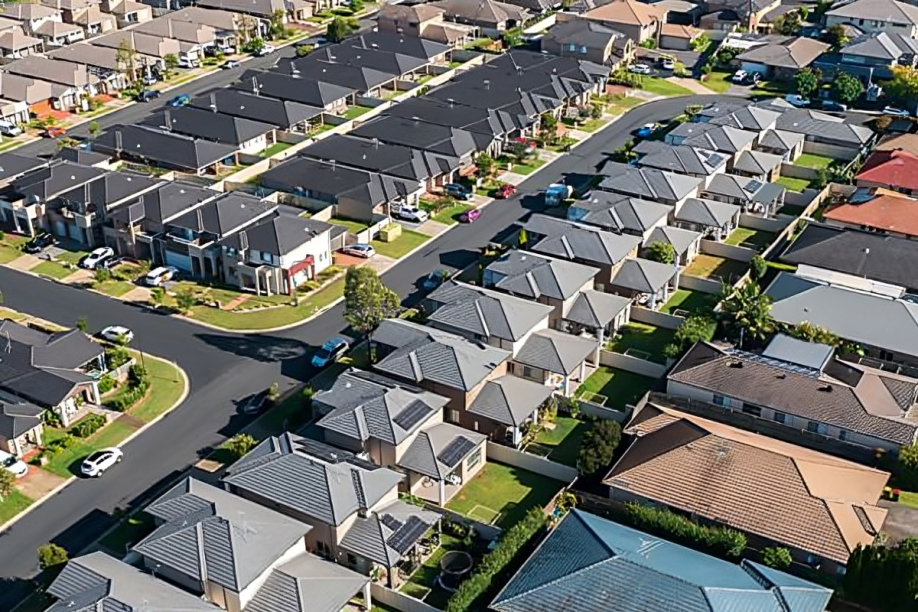The Sydney property market has always been a fascinating beast, but what we’re witnessing in 2026 is something entirely different. Design has moved from being a nice-to-have feature to becoming the primary driver of property valuations across the harbour city. While location still matters, the way a property is designed—from its spatial flow to its environmental credentials—is now determining whether a home sells for $2 million or $3 million.
After analysing recent sales data from across Sydney’s suburbs and speaking with property professionals, a clear pattern has emerged. Buyers aren’t just purchasing four walls and a roof anymore. They’re investing in lifestyle, sustainability, and spaces that adapt to how we actually live in 2026. The best architects in Sydney have caught onto this shift years ago, creating homes that tick multiple boxes simultaneously—functionality, aesthetics, and future-proofing all rolled into one compelling package.
This transformation in buyer priorities has created a new hierarchy of design elements that directly impact property values. Understanding these elements isn’t just useful for sellers looking to maximise their return—it’s essential knowledge for anyone trying to navigate Sydney’s competitive real estate landscape. Let’s break down the five design features that are genuinely moving the needle on property prices right now.
1. Seamless Indoor-Outdoor Integration
Sydney’s climate has always been one of its greatest assets, but only recently have property designs truly capitalised on this advantage. The difference between a standard sliding door and a properly executed indoor-outdoor space can add $150,000 to $300,000 to a property’s value in 2026.
What’s driving this premium? Buyers want spaces that flow. They’re rejecting the traditional compartmentalised home where the backyard feels like a separate entity. Instead, they’re gravitating toward properties where living areas extend naturally into outdoor zones through floor-to-ceiling glass, consistent flooring materials that blur the boundary, and covered outdoor rooms that function as genuine extensions of the home’s living space.
Recent sales data from Sydney’s eastern suburbs shows that properties with well-designed alfresco areas are selling 18% faster than comparable homes without this feature. In Mosman, a renovated four-bedroom home with bifold doors opening onto a level entertainer’s deck sold for $427,000 above the suburb’s median, with the estate agent attributing much of the premium to the indoor-outdoor design.
The sophistication of these spaces has evolved too. It’s not enough to simply have a deck anymore. Buyers in 2026 expect outdoor kitchens with quality appliances, weatherproof louvred roofing systems, integrated heating and cooling, and thoughtful lighting design that makes these spaces usable year-round.
2. Sustainable and Energy-Efficient Features
The conversation around sustainability has shifted from trendy to essential, and property prices are reflecting this change. Homes with genuine environmental credentials are commanding premiums of 12-20% above similar properties without these features, according to recent Sydney market analysis.
Solar panels were just the beginning. Today’s buyers are looking for comprehensive sustainable design that includes:
High-performance insulation and glazing that reduces heating and cooling costs by 40-60%. Double or triple-glazed windows, properly sealed building envelopes, and quality insulation in walls, floors, and ceilings are now expected in premium properties.
Integrated renewable energy systems go beyond rooftop solar to include battery storage, smart energy management systems, and even vehicle-to-grid connectivity for electric car owners. A recent renovation in Balmain that included a 13.5kW solar system with battery storage added an estimated $185,000 to the property’s value.
Water conservation and management features like rainwater harvesting systems, greywater recycling, and drought-resistant landscaping are particularly valuable in Sydney’s water-conscious market. Properties with these systems are appealing to both environmentally conscious buyers and those focused on reducing ongoing costs.
The financial benefits are tangible. A comprehensive sustainability retrofit can reduce a home’s ongoing energy costs by $3,000-$5,000 annually, making these features attractive from both environmental and economic perspectives. Buyers are doing the maths and realising that paying more upfront for these features delivers long-term value.
3. Flexible, Multi-Functional Spaces
The rigid floor plans of previous decades simply don’t match how Sydneysiders live and work in 2026. The pandemic permanently changed how we use residential spaces, and property values are now heavily influenced by a home’s adaptability.
Properties that offer flexible spaces are selling for 15-25% premiums over homes with traditional, fixed-purpose rooms. This shift reflects several converging trends:
Remote and hybrid work arrangements mean buyers need spaces that function as both living areas and productive work environments. But they don’t want dedicated home offices that sit empty when not in use. Instead, they’re seeking spaces that transform—a living room nook that becomes a video conference space, or a bedroom that doubles as a creative studio.
Multi-generational living has become increasingly common in Sydney, driven by both cultural preferences and housing affordability challenges. Properties that can accommodate multiple generations while maintaining privacy are highly sought after. Separate living zones, additional bathrooms, and secondary kitchenettes can add $200,000-$400,000 to a property’s value in the right locations.
The highest-performing designs incorporate moveable walls, pocket doors, and thoughtful furniture placement that allows spaces to shift purpose throughout the day. A property in Chatswood recently sold for $2.3 million—$280,000 above initial estimates—largely because its ground floor could function as either an open-plan family space or be divided into separate living and work zones.
Storage has also become crucial to flexibility. Buyers want spaces that can adapt without looking cluttered, which means built-in storage solutions that keep living areas clean and versatile are adding measurable value.
4. Premium Kitchen and Bathroom Design
While kitchens and bathrooms have always been important, the level of design sophistication expected in 2026 has reached new heights. These spaces are now viewed as the true indicators of a property’s quality, and buyers are willing to pay substantial premiums for excellence in these areas.
Kitchen design evolution: The kitchen has fully transformed from a purely functional space to the home’s social and aesthetic centrepiece. Properties with architect-designed kitchens featuring quality stone surfaces, integrated appliances, walk-in pantries, and thoughtful lighting are commanding premiums of $100,000-$250,000 over similar homes with standard kitchens.
The details matter enormously. Soft-close drawers, under-cabinet lighting, dedicated appliance garages, and considered material combinations (like pairing warm timber with cool stone) are all elements that buyers notice and value. A builder’s-grade kitchen renovation might cost $45,000, but buyers are consistently paying an additional $80,000-$120,000 for properties with truly exceptional kitchen design.
Bathroom sophistication: Luxury bathroom features have moved from the realm of high-end hotels into residential expectations. Buyers want spa-like experiences at home, which means:
- Floor-to-ceiling tiling in quality materials
- Frameless glass shower screens
- Freestanding baths positioned as design features
- Underfloor heating
- Quality tapware and fixtures
- Considered lighting including dimmers and task lighting
A Paddington terrace that underwent a renovation including two luxury bathrooms sold for 22% above the suburb’s median, with the estate agent noting that these rooms were the primary talking point during inspections.
The trend toward larger bathrooms is also impacting values. Compact, functional bathrooms are increasingly viewed as dated, while generous bathrooms with separate shower and bath zones, double vanities, and natural light are driving buyer interest and willingness to pay premium prices.
5. Smart Home Integration and Modern Connectivity
Technology integration has moved from optional to essential in Sydney’s property market. Homes with thoughtfully implemented smart systems are selling faster and for higher prices than their non-smart equivalents, with premiums ranging from 8-15% depending on the system’s sophistication.
But here’s the critical distinction: buyers in 2026 aren’t impressed by technology for technology’s sake. They want smart features that genuinely improve daily living without adding complexity. Over-engineered systems that require technical expertise to operate can actually decrease a property’s appeal.
The smart features that are adding the most value include:
Integrated climate control systems that learn occupancy patterns and adjust automatically, reducing energy costs while maintaining comfort. These systems typically save 20-30% on heating and cooling costs while adding $50,000-$80,000 to property values in the premium market.
Comprehensive security systems with smart locks, video doorbells, integrated cameras, and smartphone control. Security concerns in Sydney remain high, and properties with quality systems that can be easily managed provide both practical benefits and peace of mind.
Lighting control systems that allow scenes, dimming, and automation. Properties with well-designed lighting control are particularly appealing because they enhance both the home’s functionality and ambience.
Smart irrigation and garden management systems are gaining traction, particularly for properties with substantial outdoor spaces. These systems reduce water usage while maintaining gardens, appealing to both environmental and practical sensibilities.
The key to maximising value through smart home features is integration. Systems that work together seamlessly through a single interface are far more valuable than disconnected individual smart devices. A property in Willoughby with a fully integrated smart system (climate, lighting, security, and entertainment) sold for $195,000 above comparable non-smart properties in the same street.
The Investment Perspective
Understanding these design elements isn’t just academic—it has real implications for property investors and homeowners considering renovations. The data clearly shows that strategic investment in these five areas delivers substantial returns.
Consider the numbers: A comprehensive renovation addressing all five elements might cost $250,000-$400,000 depending on the property’s size and current condition. However, the combined value increase typically ranges from $400,000-$700,000 in Sydney’s middle and upper-tier markets. That’s a return on investment of 60-175%, not including the improved lifestyle benefits during ownership.
The timing matters too. Properties with these design elements are selling 25-40% faster than comparable homes without them, meaning vendors spend less on holding costs and face less market risk during the sales process.
Future-Proofing Your Property
Looking beyond 2026, these design trends show no signs of reversing. Climate change concerns will only intensify the focus on sustainability. Demographic shifts toward multi-generational living will continue driving demand for flexible spaces. Technology integration will become more sophisticated but hopefully more intuitive.
Property owners and investors who understand these trends can make strategic decisions that protect and enhance their property’s value over the long term. The key is to focus on quality implementation rather than trendy features that might date quickly.
The Bottom Line
Sydney’s property market in 2026 has become remarkably sophisticated in how it values design. The days of simple cosmetic updates driving significant value increases are largely over. Today’s buyers are educated, discerning, and willing to pay substantial premiums for homes that genuinely enhance their lifestyle through thoughtful design.
The five elements explored here—indoor-outdoor integration, sustainability, flexibility, premium kitchens and bathrooms, and smart home features—aren’t isolated trends. They’re interconnected aspects of how modern Sydneysiders want to live. Properties that successfully incorporate multiple elements are seeing the strongest price growth and fastest sales.
For anyone involved in Sydney property—whether buying, selling, renovating, or investing—understanding these design drivers is essential. The market has spoken clearly about what it values, and properties that deliver on these expectations are reaping substantial financial rewards.
Ready to Maximise Your Property’s Value?
The design elements driving Sydney’s property market in 2026 aren’t going to implement themselves. Whether you’re preparing to sell, planning a renovation, or simply want to enhance your home’s value, taking action on these insights can deliver substantial returns.
Start by honestly assessing your property against these five key elements. Where are the gaps? Which improvements would deliver the greatest impact for your specific property and location? Consider consulting with design professionals who understand Sydney’s market dynamics and can help you prioritise investments for maximum return.
The difference between a good property decision and a great one often comes down to understanding what buyers truly value. Now you have that knowledge—the question is, what will you do with it?


